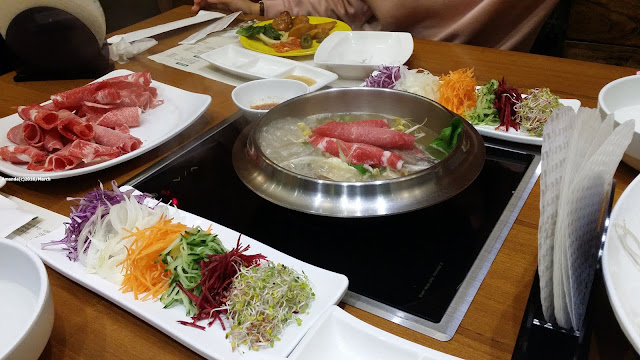The Very First Journey of the K-Travel Bus
My Tour Experience in K-Travel Bus
K-Travel Bus for foreigners is a novel idea launched to facilitate the foreigners who wish to travel in South Korea within their short vacation period. All of the K-Travel tours are 2 days and 1 night trips departing from the capital Seoul to various parts of the country. If you wish to see the beauty of the South Korea within a short period of time, joining a K-travel tour is a hassle-free way to get it arranged. The most important point is that the whole service is available in foreign languages (English, Chinese and Japanese) and you will be accompanied by a foreign language speaking guide all through the journey. No more worries about getting lost and wasting your time to work around the language barrier.
I was lucky enough to join the first ever K-Travel Bus tour to Gyeongsangbuk-do province ( North- Gyeongsang Province). We departed on our travel from Seoul Gwanghamun Square on 25th March 2016 at 9.00 am. Our lovely tour guide explained the tour schedule for the day while we were on the bus.
It was around 12 noon when we arrived at Gyeongsangbuk-do province. After having a traditional Korean type meal comprised of Bulgogi (a traditional Korean dish of Beef) we set out for the first place of attraction on our itinerary .


2. Seonbichon Village (선비촌) - Confucian Scholars' Village
By crossing the river that flows near the Sosu Seowon one can enter to the Confucian Scholars' Village. Modeled to showcase the life style of the traditional Confucian Scholars this model village has served as a K-Drama shooting place for some of the popular saeguk dramas.


3. Buseoksa Temple (부석사)
Built by the great monk Euisang during the Silla Kingdom period (676), this temple is located in a small hill top and commands a beautiful view around. The temple contains number of national treasures including the famous wooden building Muryangsujeon Hall, Sojo Yeorae Seated Buddha Statue and Stone Lantern. Buseoksa Temple is also nominated to be entered as another UNESCO World Heritage Site in Korea.

4. Korean Rice Wine - Makgoli- Making Experience
Afternoon was descending upon us whence we came out from the Buseoksa Temple. Before moving on to the next place on our itinerary we stopped by to enjoy the famous Yeongju Jung Donuts. Instead of wheat flour these donuts use locally grown glutinous rice when making donuts. The flavors are also quite unique with ginseng, ginger and sweet potato flavors. I loved the ginger flavored one very much.
After Jung Donuts our next stop was at Hongsam Makkoli Brewery. There we got the hands on experience of making Makkoli - the traditional Korean Rice Wine. By using steamed rice, yeast and water, Makkoli had quite an easy recipe but the process was quite time consuming and laborious. After making our own wine, we also got the chance to taste Makkoli with traditional Korean snacks made out of vegetables and rice flour.


After the Makkoli making experience, we were quite hungry and were eagerly looking forward to the dinner. Dinner consisted of Shabu Shabu (another Beef dish) and a variety of salads.
 |
| Shabu Shabu |

After the hearty dinner we headed to our hotel for the night - Yeongju Hotel. We were expecting a good rest and a relaxation time after the tiring day of travel. Hotel was a nice small hotel with all the facilities and conveniences. I had quite a relaxing night at Yeongju Hotel.


5. Yecheon Archery Program
Next day after having breakfast, we set out to the next place of our tour schedule. It was an exciting experience that I had been really looking forward to. At Yecheon National Archery grounds we got the chance to try our hands at Archery. The trainers were quite nice and helpful and taught us how to get accustomed with the bow and arrows. After that experience I came to appreciate how difficult a sport it is and why it was such a priced skill in the ancient warfare.
6. Hoeryongpo Village
Our next destination included a bit of climbing to a mountain top to catch a glimpse of a small village which is surrounded by a river from three sides. Actually from the top of the mountain, the village looks like a lotus blossom. It was a nice geographical formation, Adding to that, one can also witness a heart-shaped mountain formation beyond the river.
7. Mungyeong Rail Bike
After a filling lunch we went to the final destination of our schedule. Rail Biking through a mountain ridge, that offers a clear view around, was our final experience. It would have been a very nice experience if taken during the spring and autumn periods. Unfortunately, at the time we visited the flowers were yet to bloom and the trees were still bear from the winter season. This would be a great addition if you are with kids for the journey.
After the rail bike experience we started our journey back to Seoul. The entire journey was quite comfortable and well organized. Got to enjoy the beauty of another hidden corner of Korea thanks to the K-Travel Bus.
Want to join the next K-Travel Bus experience? Check here - www.k-travelbus.com
Geyongsang buk-do Map



















Comments
Post a Comment